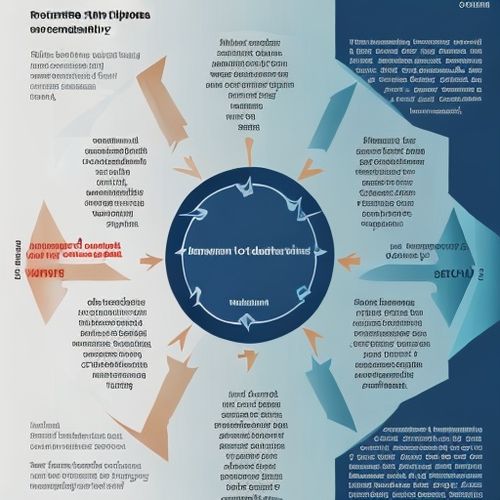In the intricate world of finance, few concepts carry as much weight as liquidity. It's the invisible force that keeps markets functioning smoothly, allowing participants to buy and sell assets with minimal friction. At its core, liquidity refers to how quickly and easily an asset can be converted into cash without significantly affecting its price. This fundamental characteristic determines not just individual investment decisions but the overall health of financial systems.
The importance of liquidity becomes starkly apparent during times of market stress. When liquidity evaporates, even fundamentally sound assets can become difficult to sell at reasonable prices. This phenomenon played out dramatically during the 2008 financial crisis when supposedly liquid mortgage-backed securities suddenly became impossible to trade. Market participants learned the hard way that liquidity isn't constant - it can disappear when needed most.
Measuring Liquidity: Beyond Surface-Level Indicators
Market practitioners employ several metrics to gauge liquidity across different asset classes. Trading volume stands as the most visible indicator, representing the total amount of assets changing hands. However, volume alone tells an incomplete story. The bid-ask spread - the difference between what buyers are willing to pay and sellers are willing to accept - often provides more nuanced insight. Narrow spreads typically indicate healthy liquidity, while widening spreads suggest deteriorating market conditions.
Depth of market represents another critical dimension. This measures the quantity of buy and sell orders at various price levels beyond the best available quotes. A deep market can absorb large trades without substantial price movements, while shallow markets may experience significant volatility from relatively small transactions. These liquidity metrics don't exist in isolation - they interact dynamically based on market conditions and participant behavior.
The Liquidity Spectrum Across Asset Classes
Liquidity characteristics vary dramatically across different financial instruments. Currency markets, particularly major pairs like EUR/USD, represent the gold standard of liquidity with trillions traded daily and razor-thin spreads. Government bonds from stable economies also rank highly, though liquidity can vary based on maturity and issuer creditworthiness. Corporate bonds present a more complex picture, with new issues typically trading more actively than older securities.
Equities demonstrate how liquidity can differ even within the same asset class. Large-cap stocks in major indices enjoy robust liquidity, while small-cap or micro-cap stocks may trade infrequently with wider spreads. Alternative assets like real estate or private equity sit at the illiquid end of the spectrum, often requiring extended timeframes to convert to cash without substantial price concessions. Understanding these differences proves crucial when constructing diversified portfolios.
Central Banks as Liquidity Providers of Last Resort
When private sector liquidity dries up, central banks often step into the breach. Their ability to create money gives them unique capacity to support markets during crises. The Federal Reserve's interventions during 2008 and 2020 demonstrated this role vividly, with massive asset purchases and lending programs aimed at restoring market functioning. These actions raise complex questions about moral hazard and the appropriate boundaries of central bank involvement.
Quantitative easing programs have fundamentally altered liquidity dynamics in bond markets. By becoming dominant buyers, central banks have arguably reduced market liquidity even as they increased system-wide money supply. This paradox highlights the distinction between funding liquidity (availability of cash) and market liquidity (ability to trade assets). Both matter profoundly for financial stability, but they don't always move in lockstep.
Technological Transformation of Liquidity Provision
Market structure evolution has dramatically changed how liquidity emerges in modern markets. High-frequency trading now accounts for significant portions of volume in many liquid instruments. While these algorithmic traders provide continuous bids and offers, questions persist about whether this liquidity proves durable during stressed conditions. The rise of electronic trading platforms has simultaneously increased transparency in some markets while creating fragmentation in others.
Dark pools and other alternative trading systems present another layer of complexity. These venues allow institutional investors to trade large blocks without immediately moving public prices. While they can help manage market impact, they also remove order flow from public markets, potentially reducing overall liquidity. This tension between private execution needs and public price discovery continues shaping market structure debates.
Liquidity Risk Management: Lessons From Past Crises
Sophisticated investors now treat liquidity as a dynamic risk factor rather than a static characteristic. The concept of liquidity-adjusted value-at-risk has gained traction, recognizing that exit strategies matter as much as entry points. Stress testing portfolios under various liquidity scenarios has become standard practice at major institutions. These exercises often reveal hidden concentrations that might appear diversified on the surface but share common liquidity risk factors.
The growing popularity of liquid alternative strategies reflects this heightened awareness. These products aim to deliver alternative-like returns while maintaining daily or weekly redemption features. However, the underlying assets don't always match the liquidity promised to investors, creating potential mismatch risks. The 2020 dash for cash exposed these vulnerabilities when several high-profile funds had to gate redemptions despite marketing themselves as liquid.
Emerging Challenges in a Changing Liquidity Landscape
Regulatory changes since the financial crisis have altered liquidity provision dynamics. Basel III capital requirements have made it more expensive for banks to warehouse inventory, reducing their traditional market-making role. Simultaneously, corporate bond inventories at dealer banks have shrunk even as issuance has grown. This disconnect raises questions about who will provide liquidity during the next market downturn.
The rise of passive investing introduces additional liquidity considerations. While index funds offer low-cost exposure, their growth means more assets tracking the same securities. This could potentially reduce price discovery and concentrate liquidity in index constituents at the expense of other securities. The next major market stress test may reveal whether these structural changes have created new vulnerabilities.
As markets continue evolving, understanding liquidity remains paramount for all participants. It's not just a technical concern for traders - liquidity affects asset valuations, portfolio construction, and risk management at every level. The most sophisticated investors recognize that apparent liquidity can be deceptive, and true resilience comes from understanding the complex interplay between market structure, participant behavior, and macroeconomic conditions.

By Noah Bell/Apr 10, 2025

By Victoria Gonzalez/Apr 10, 2025

By John Smith/Apr 10, 2025

By Sarah Davis/Apr 10, 2025

By James Moore/Apr 10, 2025

By John Smith/Apr 10, 2025

By Ryan Martin/Apr 10, 2025

By Benjamin Evans/Apr 10, 2025

By Emma Thompson/Apr 10, 2025

By Megan Clark/Apr 10, 2025

By Thomas Roberts/Apr 10, 2025

By Noah Bell/Apr 10, 2025

By George Bailey/Apr 10, 2025

By Daniel Scott/Apr 10, 2025

By Benjamin Evans/Apr 10, 2025

By Amanda Phillips/Apr 10, 2025

By Sophia Lewis/Apr 10, 2025